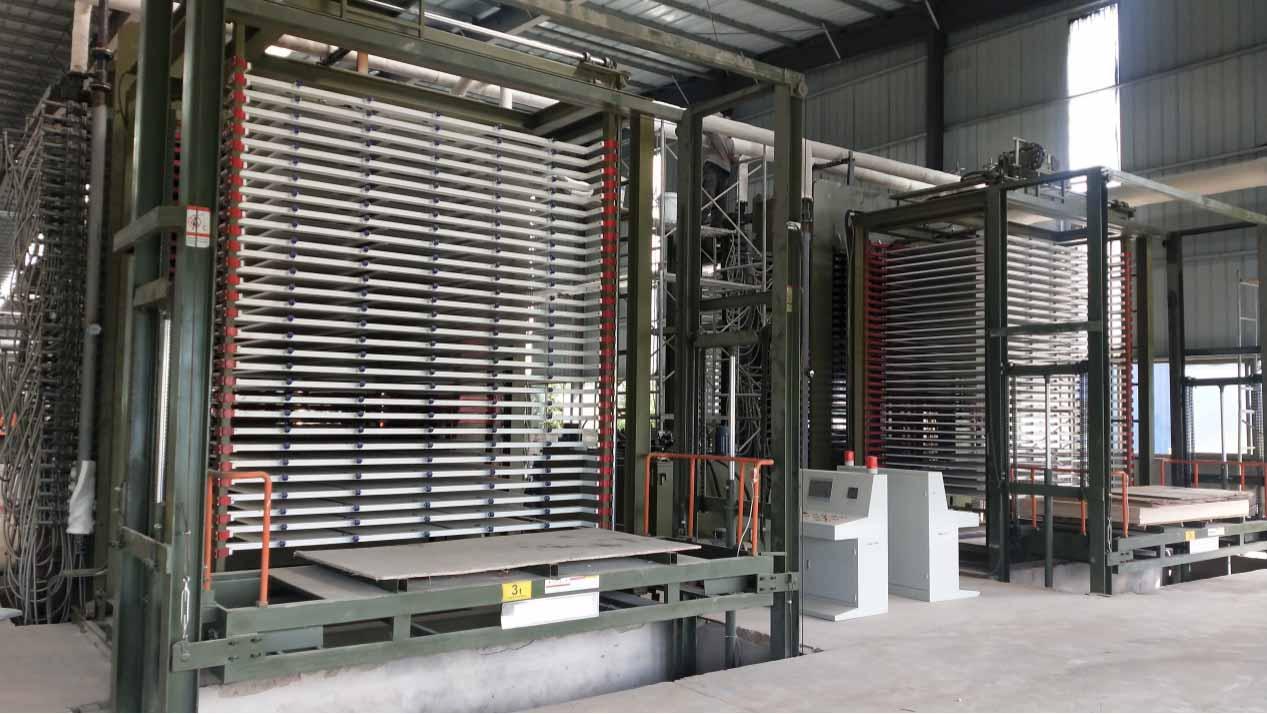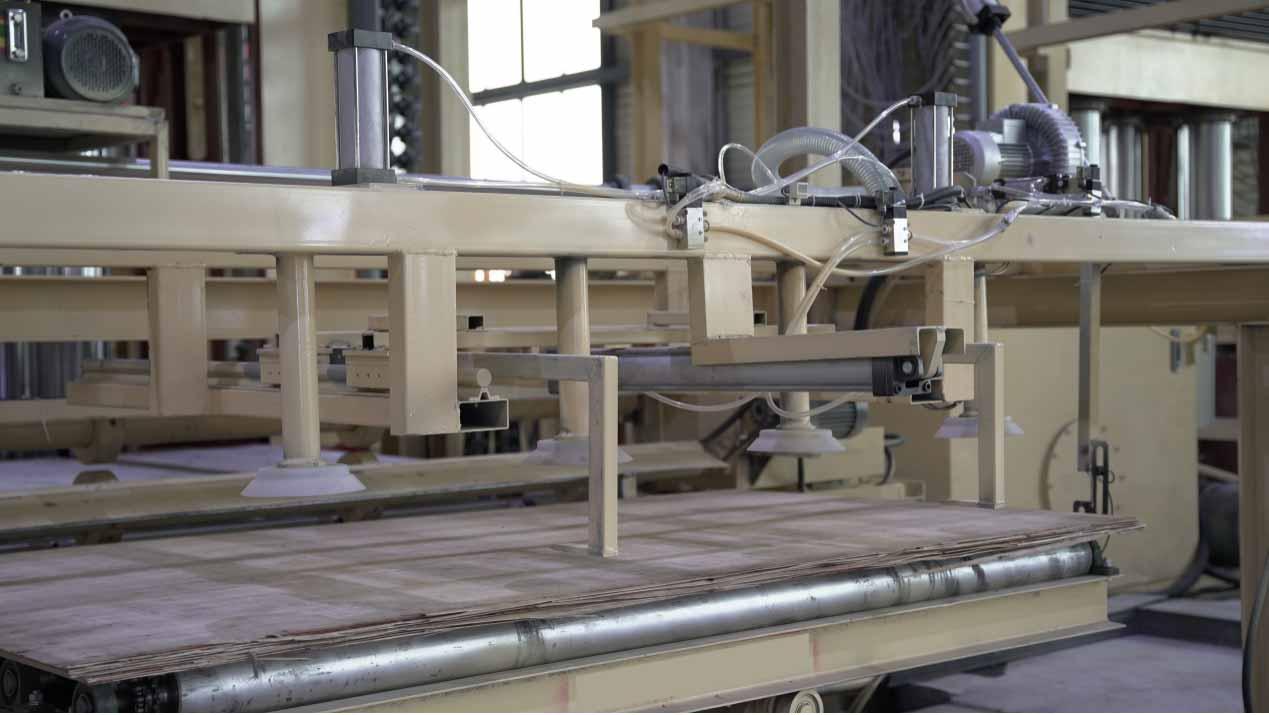أخبار
آلة الضغط الساخن للخشب الرقائقي: المكونات الأساسية ومبدأ العمل
Welcome to My Blog!
I’m so glad you’re here. Before we dive into the content, I’d love to connect with you beyond this page. On my social media, I regularly share industry insights, product updates, and behind-the-scenes moments — plus, it’s a great place for us to interact!
👉 Follow us on Facebook: شركة شاندونغ تشوانغشين لمعدات الأتمتة المحدودة
Let’s grow together and stay connected. Now, let’s jump into the blog — I hope you find the content informative, engaging, and truly valuable.
جدول المحتويات
A Plywood Hot Press Machine plays a vital role in modern plywood production. It is a key piece of equipment that uses heat and pressure to bond thin layers of wood veneer into a strong, durable sheet of plywood. The reliability and efficiency of a plywood hot press machine directly impact the quality of the final product, the production output, and overall cost efficiency.
In this comprehensive guide, we will explore the key components, working mechanism, and importance of each system involved in a plywood hot press machine. This information is valuable for manufacturers, buyers, and technicians who want to understand or invest in this equipment.
مقدمة
ال plywood hot press machine is designed to deliver the necessary combination of heat, pressure, and timing to ensure proper bonding of veneers. By pressing the glued veneer layers between heated plates, the machine activates the adhesive and produces a finished plywood board that meets structural and aesthetic standards.
Shandong Chuangxin Automation Equipment Co., Ltd is a professional plywood machinery manufacturer based in China. With our own production facility, we specialize in the customization and export of high-performance plywood hot press machines. Our solutions are designed to meet your unique capacity, space, and production needs.
Main Frame of the Plywood Hot Press Machine

The main frame serves as the structural core of the plywood hot press machine. Constructed from heavy-duty steel, it ensures stability and withstands the high temperatures and pressures used during operation.
- Material and Durability: The frame must be strong enough to endure decades of use without deformation or failure.
- Load Distribution: Properly engineered frames help distribute pressure evenly across all pressing plates.
- Component Support: It acts as the mounting base for the heating plates, hydraulic cylinders, and safety features.
A poorly designed main frame can lead to misalignment, plate warping، و pressing inconsistencies, which ultimately affect plywood quality.
Heating Plates (Platens) in a آلة الضغط الساخن للخشب الرقائقي
ال hot press plates, also known as platens, are arguably the most important working surfaces in the machine. These plates apply direct heat and pressure to the plywood stack.
- Heating Methods: Common heating techniques include steam, thermal oil, or electric resistance systems.
- Temperature Uniformity: Uneven heating can cause defects such as delamination, over-curing, or weak bonding.
- Surface Finish: A smooth platen surface improves the external appearance of the finished board.
Material Composition: Platens are usually made of high-carbon steel or other alloys that can retain heat and resist warping.
Regular maintenance such as cleaning and pressure calibration is necessary to extend platen lifespan and maintain consistent performance.
Hydraulic System: Generating the Right Pressing Force
ال hydraulic system is responsible for providing the immense force required to compress the glued veneer stack. This force, applied evenly, allows adhesive activation and bonding.
Key Components Include:
- Hydraulic Cylinders: Drive the movement of the upper press plate.
- Hydraulic Pump: Provides the required fluid pressure.
- Valves and Controls: Manage fluid flow, direction, and safety release.
Modern plywood hot press machines are equipped with closed-loop control systems, ensuring the pressure remains stable throughout the pressing cycle. This stability is crucial for uniform density و glue spread consistency.

Heating System: Delivering Controlled Temperature for Bonding
ال heating system in a plywood hot press machine maintains the temperature necessary for adhesive curing. It plays a pivotal role in activating the glue and solidifying the bond between layers.
Types of Heating Systems:
- Steam Heating: Uses high-pressure steam within the platens.
- Thermal Oil Heating: Provides more stable and high-temperature control.
- Electric Heating: Suitable for smaller, precision applications.
Consistency is key. A deviation of just a few degrees can result in weak spots or incomplete curing, especially in high-speed production lines.
[TABLE] Comparison of Heating Methods in Plywood Hot Press Machines
| طريقة التسخين | Temperature Range | Energy Efficiency | Maintenance Level | Best for Production Scale |
|---|---|---|---|---|
| Steam Heating | 140°C – 180°C | Medium | Moderate | Medium to High Volume |
| Thermal Oil Heating | 180°C – 250°C | عالي | عالي | High Volume, Precision |
| Electric Heating | Up to 200°C | Low to Medium | قليل | Small Scale, Prototypes |
This table highlights the advantages and limitations of each heating system. Choosing the right one depends on your production goals, budget، و quality standards.
Control System of the آلة الضغط الساخن للخشب الرقائقي

Modern plywood hot press machines rely on a precise control system to manage operation. This system governs parameters such as:
- Pressing Time
- Temperature
- Hydraulic Pressure
- Cycle Timing
Most advanced systems use PLC (Programmable Logic Controller) technology, allowing:
- Automated adjustments
- Error detection
- User-friendly touchscreen interfaces
Operators can store and load pressing recipes based on plywood grade, reducing the chance of human error and improving product repeatability.
Loading System: Pressing Carriage and Conveyor Integration

Efficient material handling can significantly improve production speed. The loading system moves the raw veneer stack into position and removes the finished plywood panel once the press cycle completes.
الميزات الرئيسية:
- Automatic Conveyors: Synchronize with press timing.
- Hydraulic or Pneumatic Lifters: Position the boards accurately.
- Safety Sensors: Prevent collisions or misalignment.
By reducing manual labor, this system minimizes errors and supports continuous or semi-continuous operation in high-output environments.
Safety Devices in a آلة الضغط الساخن للخشب الرقائقي
Because of the high temperature and pressure, a plywood hot press machine must include safety mechanisms. These features protect the operator and the machine from damage.
Common Safety Devices:
- Emergency Stop Buttons
- Pressure Relief Valves
- Overheat Protection
- Mechanical Safety Locks
- Protective Covers and Shields
Operators should receive proper training, and routine safety checks should be part of the maintenance schedule to ensure long-term reliability and accident prevention.
Benefits of Choosing the Right Plywood Hot Press Machine
Investing in a high-quality plywood hot press machine brings numerous advantages:
- Consistent Product Quality
- Increased Production Speed
- Energy Savings through Efficient Systems
- Fewer Downtimes
- Longer Equipment Lifespan
Moreover, selecting a machine from a reputable manufacturer like شركة شاندونغ تشوانغشين لمعدات الأتمتة المحدودة ensures that you receive technical support, customization services، و reliable parts.
خاتمة
Understanding the structure and functionality of a plywood hot press machine is crucial for anyone involved in the plywood industry. From the main frame to the hydraulic system and safety features, each component plays a pivotal role in determining your factory’s output, safety, and product quality.
If you’re planning to upgrade your equipment or enter the plywood manufacturing market, choosing the right plywood hot press machine will shape your production efficiency and competitiveness.
التعليمات
Q1: What factors affect the cost of a plywood hot press machine?
A: Factors include size, number of layers, type of heating system, automation level, and brand.
Q2: How long is the pressing time per plywood sheet?
A: Typically ranges from 3 to 7 minutes, depending on adhesive type and board thickness.
Q3: Can the machine be customized?
A: Yes, companies like Shandong Chuangxin offer fully customizable solutions.
Q4: What is the maintenance frequency?
A: Daily cleaning, weekly pressure checks, and monthly hydraulic oil inspection are recommended.
Q5: How does platen quality affect product output?
A: High-quality platens ensure even heat transfer, flat surface contact، و minimal downtime.
أحدث الأخبار
أغسطس 2, 2025
Need a Cold Press Machine Supplier? Learn essential factors to…
يوليو 30, 2025
Cold Press Machine: Reduces waste by 18% & boosts plywood…
يوليو 29, 2025
Looking for a reliable hydraulic press manufacturer? Discover 3 key…
